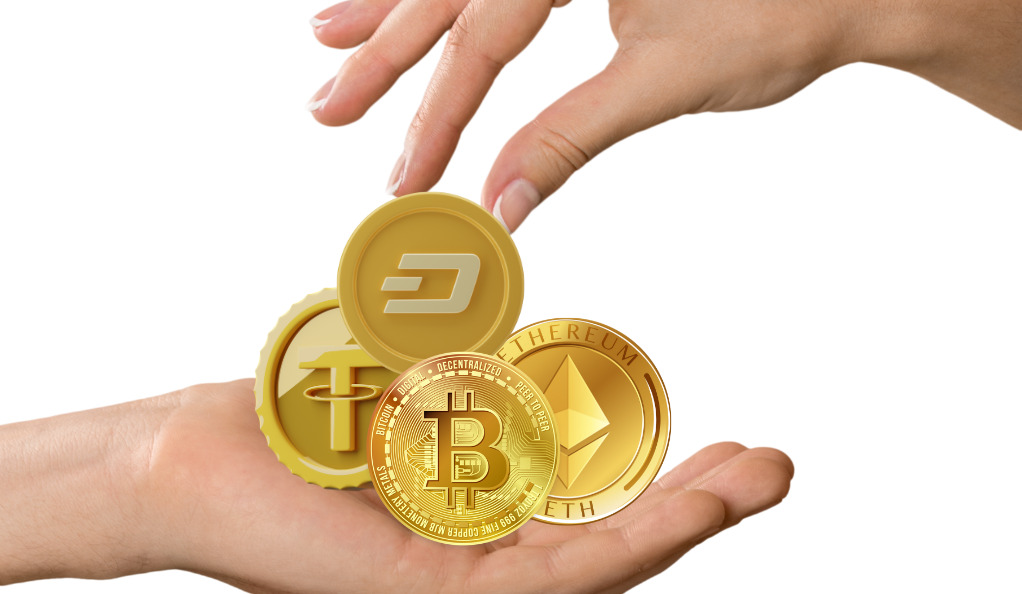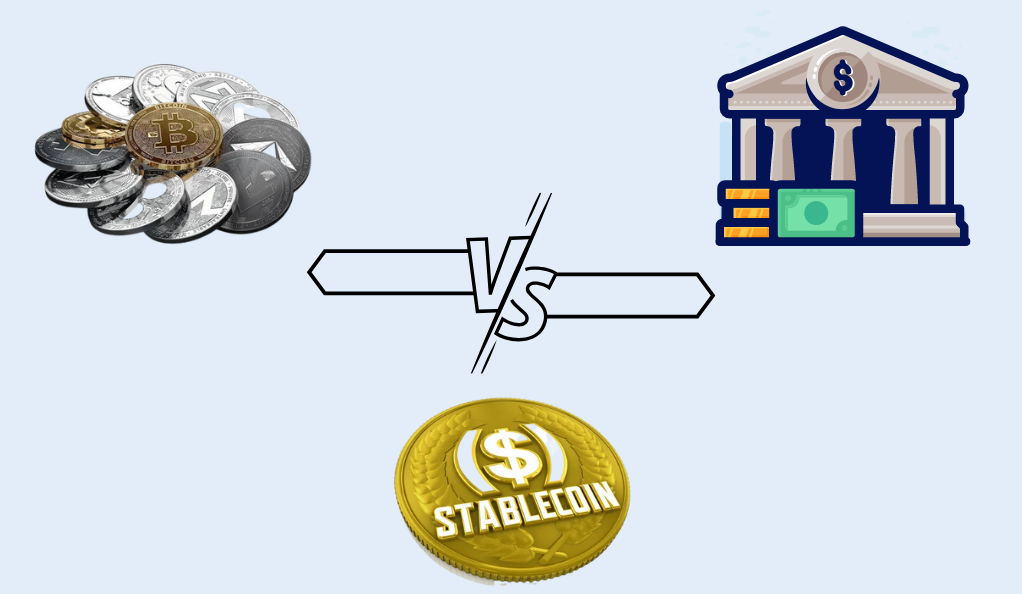The term “cryptocurrency” has become synonymous with Bitcoin for many, given its pioneering role in the digital currency revolution. However, the cryptocurrency ecosystem is vast and diverse, with thousands of digital currencies known as “altcoins” (alternative coins to Bitcoin) vying for attention and adoption. This article delves deep into the world of altcoins, exploring their origins, functionalities, and the dynamics that set them apart from Bitcoin.
Altcoins, short for “alternative coins,” refer to any cryptocurrency other than Bitcoin. They emerged as alternatives to Bitcoin, aiming to address some of its perceived shortcomings or to offer entirely new functionalities. Since the inception of Bitcoin in 2009, thousands of altcoins have been created, each with its unique features and use cases.

The Genesis of Altcoins
The journey of altcoins began shortly after Bitcoin’s inception. Pioneers like Namecoin and Peercoin introduced novel ideas like decentralized domain registration and proof-of-stake consensus mechanisms. As the crypto market expanded, the demand for diverse blockchain applications and faster, more scalable transactions fueled the rise of altcoins.
Categories of Altcoins
- Forks of Bitcoin: These are altcoins derived from Bitcoin’s open-source code. Examples include Bitcoin Cash and Bitcoin SV.
- Platform Tokens: Cryptocurrencies like Ethereum that allow other tokens to be built on their platforms.
- Stablecoins: Digital currencies pegged to a stable asset, like the US Dollar. Examples include USDC and Tether.
- Privacy Coins: Altcoins like Monero and Zcash that focus on providing enhanced privacy and anonymity for users.
Altcoins vs. Bitcoin: A Comparison
| Feature | Bitcoin | Altcoins (Example: Ethereum) |
|---|---|---|
| Consensus Mechanism | Proof-of-Work | Proof-of-Stake (for Ethereum 2.0) |
| Transaction Speed | 10 minutes (average block time) | 15 seconds (for Ethereum) |
| Smart Contract Capability | Limited | Yes |
| Supply Limit | 21 Million | Varies by altcoin |
The Impact of Altcoins on the Crypto Ecosystem
The introduction of new altcoins has been observed to influence Bitcoin’s returns. For instance, the introduction of a new altcoin can lower Bitcoin’s return by an average of 0.7%. This dynamic showcases the competitive nature of the cryptocurrency market and the continuous evolution driven by innovation and user demand.
Challenges Facing Altcoins
Despite their potential, altcoins face challenges related to scalability, security, and regulatory uncertainties. The vast number of altcoins also poses risks, as not all projects may succeed or offer real value. Investors must conduct thorough research and due diligence before diving into the altcoin market.
The Future of Altcoins
As the crypto market matures, altcoins will likely undergo further transformations. Successful projects will play a more prominent role in the financial world, driving innovation and challenging traditional finance systems.
Understanding the Functionality of Altcoins
The Essence of Altcoins
Altcoins are not just mere replicas of Bitcoin. While they operate on the foundational principle of blockchain technology, many altcoins have introduced innovative features, mechanisms, and use cases that differentiate them from Bitcoin. Ethereum, for instance, expanded the potential of blockchain technology beyond just financial transactions by introducing smart contracts.
Introduction to Smart Contracts
Smart contracts are self-executing contracts where the terms of agreement or conditions are written into lines of code. They are immutable and are executed by the blockchain when trigger conditions are met.
- Ethereum and Smart Contracts: Ethereum stands out as a pioneering platform in the realm of smart contracts. Unlike Bitcoin, which primarily focuses on financial transactions, Ethereum’s blockchain is designed to record agreements in the form of smart contracts. These contracts automatically execute when predefined conditions are satisfied, eliminating the need for intermediaries.
- Revolutionizing Industries: The potential applications of smart contracts are vast. They can transform sectors that currently rely on intermediaries, such as insurance, banking, and copyright management. By automating processes and ensuring trust, smart contracts can lead to cost savings, increased efficiency, and reduced fraud.
Altcoins Focusing on Privacy and Anonymity
While transparency is one of the hallmarks of blockchain technology, there’s a growing demand for privacy and anonymity in certain use cases and transactions.
- Privacy Coins: Altcoins like Monero and Zcash have been designed with a focus on user privacy. Unlike Bitcoin transactions, which are transparent and traceable, these privacy coins offer enhanced anonymity, making it nearly impossible to trace transactions back to individual users.
- Why Privacy Matters: In an era where data breaches and privacy concerns are rampant, there’s a growing demand for digital currencies that offer enhanced privacy features. Whether it’s for personal reasons, business confidentiality, or protection against potential threats, privacy coins cater to users who prioritize anonymity.
Altcoins vs. Bitcoin: Evolving Functionalities
While Bitcoin remains the most recognized and widely adopted cryptocurrency, altcoins continue to evolve, introducing functionalities that address perceived gaps in Bitcoin or offer entirely new features. Whether it’s faster transaction times, as seen with Litecoin, or the introduction of decentralized applications (DApps) with Ethereum, altcoins are continuously pushing the boundaries of what’s possible with blockchain technology.
Investment Potential in Altcoins

The Rise of Altcoins
The term “altcoin” encompasses a vast array of cryptocurrencies other than Bitcoin. With over 15,000 cryptocurrencies in existence, Bitcoin accounts for about 40% of the market share, leaving a significant 40% of the market composed of various altcoins. These altcoins, such as Ethereum’s Ether, Litecoin, and even meme coins like Dogecoin, have gained traction among investors looking to diversify their crypto portfolios.
Growth and Opportunities
- Market Dynamics: The altcoin market has witnessed substantial growth, with some altcoins delivering impressive returns. Factors such as technological advancements, real-world applications, and market sentiment play a crucial role in driving altcoin prices.
- Stablecoins: These are altcoins pegged to fiat currencies, often the U.S. dollar. With the rise of central bank digital currencies (CBDCs), stablecoins like Tether (USDT) and Circle’s USDC present potential investment opportunities. They could play a pivotal role in ensuring the U.S. dollar retains its global trading power.
- Use Cases: The real-world applications of altcoins determine their investment potential. For instance, Decentraland’s utility tokens have surged in value as major brands show interest in the metaverse and virtual real estate.
Risks and Challenges
Investing in altcoins is not without risks. The volatile nature of the crypto market means prices can fluctuate dramatically in short periods.
- Regulatory Concerns: The regulatory landscape for altcoins remains uncertain in many jurisdictions. Changes in regulations can significantly impact altcoin prices and their adoption.
- Market Sentiment: The crypto market is heavily influenced by sentiment. News, social media buzz, and endorsements by influential figures can lead to rapid price swings.
- Research is Crucial: Given the vast number of altcoins and the dynamic nature of the crypto market, thorough research is essential. Investors should understand the technology behind an altcoin, its use cases, team, and community support before investing.
The Importance of Research
- Understanding the Altcoin: Before investing, it’s crucial to understand the altcoin’s purpose, technology, and roadmap. This includes its use cases, the problem it aims to solve, and its competitive advantage.
- Community Engagement: A strong and engaged community can be a good indicator of an altcoin’s potential. Community-driven projects, especially those with active development and transparent communication, tend to have a brighter future.
- Market Analysis: Keeping an eye on market trends, news, and expert opinions can provide insights into potential investment opportunities and risks.
Regulation and Legitimacy of Altcoins
The Global Response to Altcoins
The cryptocurrency landscape has witnessed an influx of altcoins, each offering unique functionalities and use cases. This diversity has prompted varied responses from governments and financial authorities worldwide:
- Embracing Altcoins: Some countries have recognized the potential of altcoins and have taken steps to create a conducive environment for their growth. They have developed regulatory frameworks that promote innovation while ensuring consumer protection.
- Cautious Approach: Other nations remain wary due to concerns about market volatility, potential illicit activities, and the challenges of oversight. These countries have either imposed strict regulations or outright bans on certain altcoin activities.
Implications for Traders and Platforms
The evolving regulatory landscape has direct implications for both individual traders and cryptocurrency platforms:
- Compliance: Platforms dealing with altcoins must ensure they comply with the regulations of the jurisdictions they operate in. This might involve adhering to Know Your Customer (KYC) and Anti-Money Laundering (AML) protocols, reporting mechanisms, and ensuring user data protection.
- Market Access: For traders, regulatory decisions can influence which altcoins they can access and trade. For instance, a ban on a specific altcoin in a country could mean residents cannot legally trade that coin.
- Investment Security: Regulatory clarity can enhance investor confidence. A well-regulated altcoin market can offer better protection against scams, frauds, and market manipulations.
The Balancing Act
Regulating altcoins is a complex task. Authorities must strike a balance between fostering innovation and ensuring market integrity:
- Promoting Innovation: Overly strict regulations can stifle innovation and deter startups and entrepreneurs from venturing into the altcoin space.
- Protecting Stakeholders: On the flip side, a lack of regulation can leave investors vulnerable to scams and fraudulent schemes. Ensuring the legitimacy of altcoins and related platforms is crucial for the broader adoption of cryptocurrencies.
The Road Ahead
The future of altcoin regulation remains uncertain. As the market matures and more real-world applications emerge, regulatory frameworks will likely evolve to address the unique challenges and opportunities presented by altcoins.
The Role of Altcoins in Decentralization
The emergence of Bitcoin in 2009 marked the beginning of a financial revolution, introducing the world to the concept of decentralized finance. However, while Bitcoin laid the foundation, altcoins have played a pivotal role in pushing the boundaries of what’s possible within this decentralized framework. This article delves into the role of altcoins in the broader objective of promoting decentralized finance and how they challenge traditional financial systems.
Altcoins: Beyond Just Digital Currency
While Bitcoin was primarily designed as a digital currency, altcoins have expanded the scope of blockchain technology. They have introduced a myriad of functionalities, from smart contracts to decentralized applications (DApps), thereby offering more than just a medium of exchange.
Pushing the Boundaries of Traditional Finance
- Decentralized Exchanges (DEXs): Altcoins have given rise to DEXs, platforms where users can trade cryptocurrencies directly without intermediaries. This not only reduces costs but also enhances security and privacy.
- Lending and Borrowing: Platforms like Compound and Aave, built on altcoins like Ethereum, have decentralized the lending and borrowing sector, offering peer-to-peer loans without traditional banking systems.
- Asset Tokenization: Altcoins enable the tokenization of real-world assets, from real estate to art, allowing them to be traded on blockchain platforms.
The Broader Objective: Decentralized Finance (DeFi)
DeFi, or decentralized finance, is a term that encapsulates the vision of a financial system without centralized authorities. Altcoins are at the heart of this movement.
- Open Access: One of the primary objectives of DeFi is to provide financial services to the unbanked or underbanked populations. Altcoins facilitate this by offering platforms that don’t require traditional banking systems.
- Interoperability: Many altcoins are designed to be interoperable, meaning they can seamlessly interact with other blockchains and systems. This fosters a more integrated and collaborative financial ecosystem.
- Transparency and Security: Transactions on altcoin networks are transparent and immutable. This reduces the chances of fraud and enhances trust among participants.
Challenges and Considerations
While altcoins play a crucial role in decentralization, they also bring challenges. The nascent nature of the technology means there are potential vulnerabilities, and the regulatory landscape remains uncertain. Moreover, the decentralized nature can sometimes lead to governance issues, where decisions about the future of the altcoin are contested within the community.
Altcoins vs. Stablecoins and CBDCs: Navigating the Digital Currency Ecosystem

The digital currency landscape has evolved significantly over the past decade. While Bitcoin and altcoins have been the pioneers, stablecoins and Central Bank Digital Currencies (CBDCs) have emerged as significant players, each with its unique value proposition and implications for the global financial system. This article delves into the differences, similarities, and the evolving dynamics between altcoins, stablecoins, and CBDCs.
The Digital Currency Spectrum
Altcoins:
These are alternative cryptocurrencies to Bitcoin. They can vary widely in terms of functionality, from offering faster transaction speeds to providing enhanced privacy features or even entirely new platforms for decentralized applications.
Stablecoins:
Designed to combat the volatility seen in cryptocurrencies like Bitcoin and many altcoins, stablecoins are pegged to a stable asset, such as the US dollar or gold. Examples include Tether (USDT) and USDC. They offer the benefits of digital currency without the extreme price fluctuations.
CBDCs (Central Bank Digital Currencies):
These are digital currencies issued by central banks. Unlike decentralized cryptocurrencies, CBDCs are centralized and represent a digital form of a country’s official currency. They aim to combine the benefits of digital currencies with the stability and backing of government-issued currencies.
Understanding Differences and Similarities
- Decentralization: While altcoins operate on decentralized platforms, CBDCs are inherently centralized, being issued by central banks. Stablecoins, although operating on decentralized platforms, are often backed by centralized reserves.
- Purpose and Functionality: Altcoins can serve various purposes, from being a medium of exchange to representing a stake in a project. Stablecoins primarily provide price stability in the crypto ecosystem. CBDCs aim to digitize the official currency, potentially offering faster and cheaper transactions while maintaining state control.
- Regulation: Altcoins and stablecoins operate in a largely unregulated or self-regulated environment, leading to concerns about their use in illegal activities. CBDCs, being state-backed, would operate under a regulated framework, ensuring compliance with financial laws and regulations.
The Evolving Digital Currency Ecosystem
The rise of stablecoins and CBDCs indicates a shift towards a more regulated digital currency environment. Central banks worldwide are exploring CBDCs as a means to modernize the financial system, enhance payment efficiency, and counter the growing influence of private digital currencies.
- Stablecoins: With their peg to stable assets, they have become a refuge during volatile market conditions, offering a bridge between traditional finance and the crypto world.
- CBDCs: Countries like China have already piloted their CBDCs, with many others researching and planning their digital currencies. CBDCs could redefine cross-border transactions, enhance financial inclusion, and give central banks a new tool for implementing monetary policy.
Future Implications
The coexistence of altcoins, stablecoins, and CBDCs presents both challenges and opportunities. While they can collectively enhance the global financial system’s efficiency, concerns about regulatory oversight, financial stability, and technological infrastructure need addressing.
- Potential for Disruption: The widespread adoption of CBDCs could disrupt the traditional banking system, affecting everything from lending practices to interest rates.
- Interoperability: For a seamless global financial system, interoperability between different digital currencies and traditional financial systems will be crucial.
- Regulatory Challenges: Balancing innovation with regulatory oversight will be a significant challenge, ensuring that the digital currency ecosystem is safe, secure, and compliant with international financial laws.
Challenges and Future Outlook for Altcoins
The digital currency landscape, while promising, is not without its challenges. Altcoins, despite their potential and growth, face several hurdles that need addressing for them to play a more dominant role in the financial ecosystem. This article delves into the challenges faced by altcoins and provides a glimpse into their future outlook, especially in light of the evolving digital currency ecosystem.
1. Scalability Concerns
One of the primary challenges faced by many altcoins is scalability. As the number of users and transactions grows, there’s a need for these networks to handle increased loads without compromising on speed or security.
- Layer 2 Solutions: Some altcoins are exploring Layer 2 solutions, which operate on top of the existing blockchain, to enhance scalability. These solutions can process transactions off-chain, reducing the load on the main blockchain.
2. Security Issues
The decentralized nature of altcoins makes them susceptible to various security threats, from 51% attacks to smart contract vulnerabilities.
- Constant Vigilance: Altcoin developers need to be proactive in identifying and addressing potential security threats. Regular audits, community feedback, and staying updated with the latest in cybersecurity are crucial.
3. Regulatory Uncertainties
The article from Dataconomy highlighted the regulatory challenges faced by altcoins. Different countries have varied stances on altcoins, from embracing them to imposing outright bans. This regulatory uncertainty can hinder adoption and innovation.
- Seeking Clarity: For altcoins to thrive, there’s a need for clear and consistent regulatory frameworks that promote innovation while ensuring consumer protection.
4. The Evolving Digital Currency Ecosystem
The rise of stablecoins and Central Bank Digital Currencies (CBDCs) has added another layer of complexity to the digital currency landscape. While they offer stability and have the backing of centralized entities, they also pose competition to traditional altcoins.
5. Predictions for the Future
- Integration with Traditional Finance: As the crypto market matures, altcoins could see more integration with traditional financial systems, offering hybrid solutions that combine the best of both worlds.
- Innovation and Diversification: The altcoin market will likely witness the emergence of more niche cryptocurrencies, each addressing specific challenges or sectors, from healthcare to supply chain management.
- Community-Driven Growth: The future of many altcoins will hinge on their communities. Active, engaged, and growing communities can drive innovation, adoption, and ensure the longevity of the altcoin.
Conclusion
The digital currency domain, with altcoins at its forefront, stands at a crossroads of immense potential and significant challenges. From scalability and security concerns to the ever-evolving regulatory landscape, altcoins must navigate a complex environment. However, their adaptability, coupled with technological advancements and a strong community backing, positions them favorably in the financial future. As the lines between traditional and decentralized finance blur, altcoins are poised to be pivotal players in this transformative era of the financial world. Their journey, though filled with hurdles, promises innovation, integration, and a reshaping of the global financial paradigm.
At bitvestment.software, our commitment is to deliver unbiased and reliable information on subjects like cryptocurrency, finance, trading, and stocks. It's crucial to understand that we are not equipped to offer financial advice, and we actively encourage users to conduct their own comprehensive research.
Read More